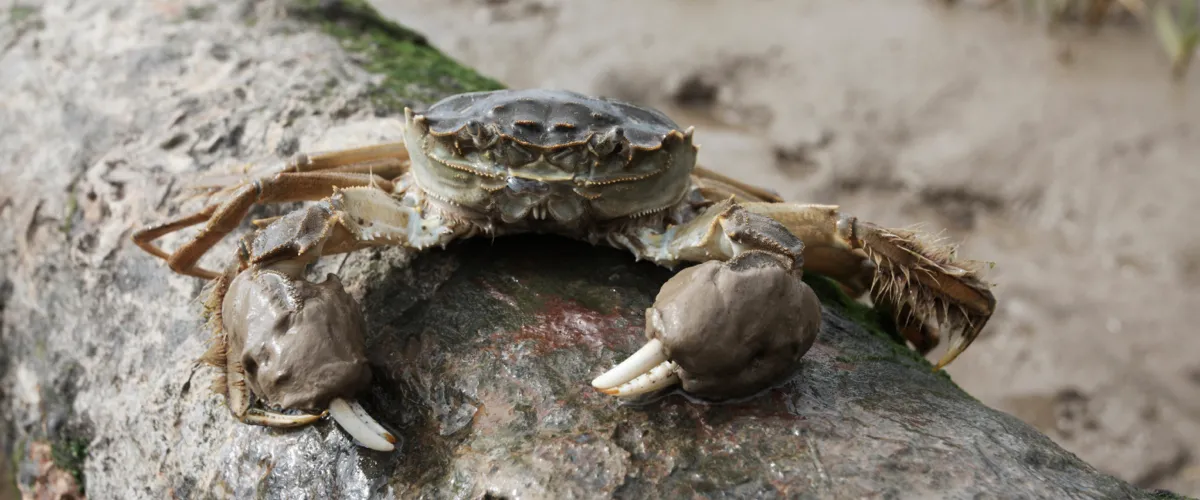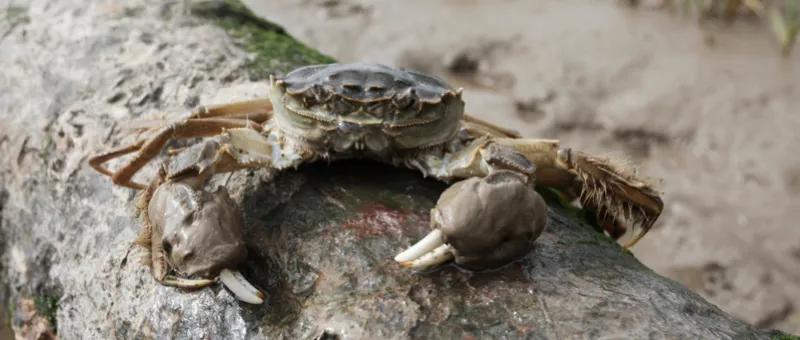Ballast Water Management Convention: D1 and D2 Standards
In Rotterdam, Netherlands, alone, a ship docks or departs every seven minutes. These ships have all taken on or discharged ballast water, meaning that every two weeks the entire harbor capacity of Rotterdam is replaced by new ballast water. This water contains numerous organisms that do not belong in the area, so-called exotics or non-native species. These exotics are discharged with ballast water from ships and can lead to significant local disruptions of ecosystems. A well-known example is the Chinese mitten crab (Eriocheir sinensis), an invasive species that has impacted European waterways by displacing native species and damaging infrastructure.
This problem highlights the global challenge that the Ballast Water Management Convention aims to address. The convention, officially known as the International Convention for the Control and Management of Ships’ Ballast Water and Sediments (BWMC), focuses on preventing the spread of harmful aquatic species through ballast water. Adopted by the International Maritime Organization (IMO) in 2004, the convention has been in force since 2017.
In this article, we will explore the D1- and D2-standards of the Ballast Water Management Convention, technological solutions such as electrochlorination and UV treatment, and the impact on shipping and the environment. Additionally, we will discuss supplementary measures that contribute to an effective ballast water management strategy. We will examine how these standards help protect marine ecosystems and the technological innovations that shipowners can employ to comply with regulations. Finally, we will address the economic and technical challenges of implementing these standards and how international cooperation is crucial to the convention’s success.
D1 and D2 Standards
The Ballast Water Management Convention establishes two standards to minimize the spread of harmful organisms: the D1 and D2 standards. The D1 standard applies to ships with a gross tonnage (GT) of 400 or more and requires that at least 95% of ballast water be exchanged in open seas, at a distance of at least 200 nautical miles from the coast and at a depth of at least 200 meters. This temporary measure, known as water exchange, allows ships time to adapt to the stricter D2 standard.
From September 2024, the D2 standard will apply to all ships using ballast water, regardless of their tonnage. This standard mandates the installation of a Ballast Water Treatment System (BWTS). Since September 2017, ships must comply with this standard upon renewal of their International Oil Pollution Prevention (IOPP) certificate. Additionally, ships must have a Ballast Water Management Certificate (BWMC), an approved ballast water management plan, and a ballast water logbook on board. The D2 standard sets specific limits on the number of living organisms that can be discharged, leading to a significant reduction in ecological risks.
Supervision and Certification
In the Netherlands, the Human Environment and Transport Inspectorate (ILT) is responsible for monitoring compliance with these regulations. Recognized classification societies, such as Lloyd’s Register (LR) and DNV GL, certify and approve ballast water management plans. These societies conduct inspections and audits to ensure that ballast water treatment systems function effectively and comply with international standards. The ballast water logbooks that ships maintain must be accurate and meet established guidelines but do not require separate approval. Additionally, ships may be subject to random sampling during inspections to verify compliance. Non-compliance can result in penalties, such as fines, certificate revocation, or even ship decommissioning.
Importance of Sediment Management
In addition to the D1 and D2 standards, sediment management plays a crucial role in effective ballast water management. Regular removal of sediments from ballast tanks prevents the accumulation of harmful organisms and toxins, enhancing the effectiveness of ballast water treatment systems (BWTS). Additionally, sediment management helps reduce wear on BWTS and extends the lifespan of these installations. Proper sediment management also contributes to the overall health of the ballast water system, reducing the risk of technical failures and environmental pollution.
Technological Solutions
To comply with the D2 standard, ships use a variety of technologies, with electrochlorination and UV treatment being the most common methods. Electrochlorination uses electricity to convert saltwater into sodium hypochlorite, a powerful disinfectant that kills harmful organisms. Although effective, this method has some drawbacks. Electrochlorination can produce harmful byproducts, such as trihalomethanes (THMs) and halogenated organic compounds, which can be hazardous to marine ecosystems and crew health. Furthermore, the method is less efficient in freshwater or brackish water, where low salt concentrations reduce the effectiveness of electrolysis. Certain organisms may also develop resistance to chlorides, reducing the effectiveness of the treatment. Additionally, these systems require regular maintenance and can result in higher operating costs due to the continuous supply of electrolysis and chemicals.
In contrast, UV treatment uses ultraviolet light to damage the DNA of microorganisms, preventing them from reproducing. The main advantage of this method is that no harmful chemical byproducts are generated, making it safer for both the environment and the crew’s health. UV treatment is also flexible and effective in various types of water, regardless of salinity. Maintenance is simpler as UV systems require less chemical storage and handling. However, UV treatment has its limitations. Particles in turbid water can block UV light, reducing its effectiveness. This often requires pre-filtration to ensure water clarity. UV systems also consume relatively high amounts of energy, which can increase operating costs and affect the ship’s energy efficiency. UV lamps also have a limited lifespan and must be replaced regularly, adding extra maintenance and costs.
Alternative Techniques for Ballast Water Treatment
In addition to commonly used technologies such as electrolysis (EC) and UV treatment, several other effective solutions are available for ballast water treatment. Examples include filtration and sedimentation, advanced oxidation processes (AOP), electrochemical treatment, deoxygenation, heat treatment, ultrasonic cavitation, magnetic field treatment, pasteurization, chemical injection, and ozone treatment. For more information on the specific functioning of these techniques, their advantages and disadvantages, and which types of ships they are best suited for, please refer to my article: “Alternative Techniques for Ballast Water Treatment”.
Impact on Shipping and the Environment
The introduction of the Ballast Water Management Convention has major implications for both the shipping industry and the environment. The purchase and installation of ballast water treatment systems (BWTS) involve significant costs, which can be particularly challenging for smaller shipping companies. In addition to the initial costs, operational expenses can increase due to higher energy consumption and the maintenance requirements of these systems. However, in the long run, these investments can lead to savings by avoiding fines and preventing ecological damage.
The integration of BWTS into existing ship designs is often technically challenging, especially due to limited onboard space and the need to modify ballast tanks. Innovative design adaptations and close collaboration with technology partners are crucial to overcoming these challenges.
From an environmental perspective, the convention contributes significantly to the protection of marine ecosystems by limiting the spread of invasive species. This enhances biodiversity and promotes healthy marine habitats, which are essential for sustainable fishing and tourism.
Finally, international cooperation plays a crucial role in the success of the convention. By aligning national and international regulations, such as those of the International Maritime Organization (IMO) and the United States Coast Guard (USCG), a level playing field is created for the global shipping sector. This encourages environmentally friendly practices worldwide, ensuring that all ships, regardless of origin, contribute to the common goal of environmental protection and sustainable shipping.
More Information
Would you like to learn more about ballast water management requirements under the Ballast Water Management Convention? Visit the official page of the International Maritime Organization (IMO) page for Ballast Water Management.



